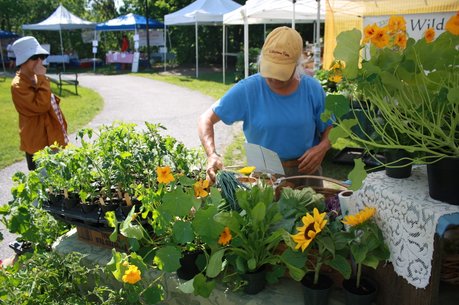 Joy prepping the Wildstone Farm stand at the spring 2016 Bennington Farmers' Market Joy prepping the Wildstone Farm stand at the spring 2016 Bennington Farmers' Market This past farm season, our employee, Silvia, who helped us launch a website back when we truly considered ourselves Luddites, started experimenting with posting Wildstone Farm pictures on Instagram. In searching for the best searchable tags to convey the message of our farm and our location and key markets, she stumbled across a new hashtag, #RootedinVermont. She wanted to find the most direct hashtags that someone in our customer region (Southwestern Vermont, neighboring NY, which is tricky to find a hashtag for, or the Northern Berkshires) would find. Though she didn't expect to expand our customer market, but she is really about sharing stories and experiences, and Instagram is a great medium to do that. However, she also wanted something that maybe others around Vermont that are into local food and organic farms may find. It can be enjoyable to check in briefly on social media and see via a hashtag, what others involved in local agriculture are involved in (Example: We love seeing the photos and reading the wonderful words of Jen at Woven Roots Farm, a farm which also has a 'no-till' ethic. If you haven't watched Jen's TedX Berkshires talk, see our former Blog Post). Here is an article from the Times Argus titled, "Vermonters Create Movement from Roots", by one of Silvia's good friends who is rooted in Marshfield, VT. It explains what the Rooted in Vermont social media campaign is all about. We hope it may provoke you to think about how you define your Foodshed and ability to purchase regionally, and perhaps share how you are "rooted in Vermont" and of your connection to Wildstone Farm. Galbraith also wrote a great article in Vermont's Local Banquet titled "Neighbors to the North- a Plethora of Produce", that got us thinking about defining our Foodshed with more of a regional perspective. As small, organic farmers we also try to support our other local farmers and producers. Sometimes it is hard to be able to afford to keep your purchases local, but we believe it can be possible with a bit of creativity. We are very thankful for some programs like Hoosac Harvest, which help to subsidize a few of our Community Supported Agriculture (CSA) shares in the Northern Berkshires to make them more affordable to some families. We ask you to keep your food purchases regional and consider joining one of our CSA shares in Southern Vermont or the Northern Berkshires (Williamstown and North Adams area). Perhaps go over the amount of money you may spend on produce at your grocer and figure out what that cost breakdown is. Do you overbuy produce and it goes to waste? Read our CSA page and offerings and see what may work for you. Maybe split a share with a friend if you're away some of summer or think a share is too large for you. Those joining the Northern Berkshires CSA Shares will have more ability, like our Farmers' Market CSA Shareholders, to customize a bit more of what you want in your Sharebox! A win-win! Still on the fence? Read this article, "How to Eat Organic Veggies for Less than $10 a Week: Join a CSA", by The Penny Hoarder. We do hope you'll join our Wildstone Farm CSA this season! Find Wildstone Farm on Instagram: Wildstone_farm_vt "Local has become a buzzword around food these days, as consumers strive to purchase ever-increasing portions of their shopping list from local food sources...They’re [consumers] also driven to know the person who grew their food and keep their food dollars circulating among neighbors.
0 Comments
11/30/2016 0 Comments Wildstone Whim: Daikon for Days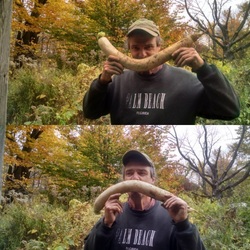 We had an overabundance of very healthy daikon (still do if you want some). Silvia was trying to explain different recipes involving daikon recently, and while perusing recipes found this cool information on the health benefits of daikon. Who knew it's a valuable respiratory health veggie with expectorant, antibacterial and antiviral properties? Better stock up since it is cold season, and we've heard people that sound like they may need to eat some daikon to help with that crud in their lungs. Daikon is a low food energy, high nutrient veggie! This Cruciferous vegetable packs a positive punch, and it's tasty too. In the Brassicaceae family? Wait, isn't that brocolli and brussel sprouts?Even though Daikon is a winter radish, it's considered cruciferous because of the benefits of its leafy greens. Most people don't really eat the greens, but they are edible and loaded with other nutrients like cancer fighting glucosinolates. Health Benefits of Daikon: -Respiratory (antibacterial/antiviral help eliminate bateria and other pathogens and help move phelgm with expectorant properties) -Digestive (has enzymes similar to those in digestive tract) -Detoxification (diruetic) -Cancer Prevention (stomach in particular) -Immune System (high vitamin C) -Anti Inflammatory -Bone Health (cruciferous veggies are rich in calcium) Learn all the Health Benefits Here Other Recipes: -The best Korean Recipes are found on YouTube from Maangchi. She is the best! -Worden Farm Kimchi Recipes -Just Search "CSA Kimchi Recipes" and scroll through the pages. There is some good stuff out there like, World Peas CSA's Daikon Fettucine with Tomato Basil Sauce from the New Art of Japanese Cooking cookbook - Early Morning Farm in Genoa, NY have a great list of recipes and tips -Roasted Root Veggies (who doesn't like this fall meal?) -Daikon and Mushroom Soup (or any miso soup) from Beneficial Farms in NM CategoriesAnytime I walk by the high tunnel, a red or orange-yellow glint catches the corner of my eye. I stop and look. What could it be? Sungold tomatoes. This recipe though it does not include them, would be delicious with the addition of some chopped sungold tomatoes added to the Peachy Chili Bean mix. I bookmarked this recipe when a group of friends and I were doing Meatless Mondays.
This time I made them I was missing a lot of what I had when I first tried the recipe, so I figured I'd just make a variation. The original version is much more photogenic, and tastier when grilled. Missing: - Pinto Beans-> subbed black beans - Mushrooms-> subbed sweet Italian peppers - Cilantro -> subbed flat leafed parsley) - I never have epazote -Spices. I toned it down because I was cooking for two fairly bland favoring people, and we all agreed to just use thef full amount of seasoning on this one. -Grill-> too lazy to start it up. Used a frying pan or two instead. Boiled the corn.. Grill is superior, but a stovetop can make this happen. My favorite variations involve using or adding: - flesh toned peaches for color boost- in this recipe I used white peaches. Not as exciting looking. -Sweet Italian Peppers from Wildstone Farm -Sungold Tomatoes, diced -Mushrooms, really add flavor -Grilled corn and fresh corn really are key RECIPE:
Gently pull back the husks of the corn cobs, but don’t remove them entirely. Remove the silk and cut off the other end. Soak the cobs of corn in cold water for about 30 minutes. Bring a grill to medium-high heat. Dry the corn and drizzle with oil of your choice. Fold the husks back down and tie or twist the ends. Place the corn cobs on grill over medium-high heat for about 5 to 7 minutes, rotating frequently, or until the corn is grilled and tender. Set aside to cool. When the corn has cooled, place a cob over a large bowl and remove the grilled kernels with your knife cutting in a downward motion towards the bowl. Repeat process until all grilled kernels have been cut from all 3 corn cobs. Set aside. To make the peachy chili beans: Place the peaches and mushrooms in a grill pan. Drizzle the mushrooms with a dash of canola or olive oil. Grill the peaches for about 3 minutes, or until they have caramelized grill marks. Flip and repeat on the other side of the peach slices. Grill the mushrooms for 4-5 minutes, stirring occasionally. Set aside the mushrooms and the peaches in separate bowls. In a medium pot over medium-high heat, sauté the onion in a drizzle of coconut oil for 3-5 minutes, or until softened. Add the garlic and tomato paste and cook for 2-3 minutes more, stirring occasionally, until the onion tomato and garlic is well mixed and bubbling. Season the onion garlic tomato mixture with chili powder, paprika, cayenne, oregano and cumin. Add the beans, water and epazote if using. Cut the grilled peaches into a large dice and add them to the bowl of beans along with their grilling juices that have collected in the pan. Bring the beans to a slow simmer and cook for 5-7 minutes, or until the liquid has reduced and the beans have a nice thick consistency. Season with salt and pepper to taste. To complete the peachy chili bean tacos: Sprinkle some water over the cold corn tortillas. Warm the corn tortillas on the grill for 2-4 minutes, or until the corn tortillas have softened and warmed. Fill each corn tortilla with a portion of peachy beans topped with grilled corn and mushrooms. Garnish the top of the tacos with chopped cilantro and enjoy, The recipe was found on Meatless Monday's website, and credited to Danica of Soundly Vegan. Find the Recipe at: http://www.meatlessmonday.com/recipes/peachy-chili-bean-tacos/ 5/4/2016 0 Comments We are All in This TogetherOn this Wednesday Wildstone Whim, we would like to share this heartfelt TedX Berkshires talk by Jen Salinetti of Woven Roots Farm in Tyringham, MA.
Our farm helper and online guru, Silvia, often passed by this farm en route to her work on the Appalachian Trail in Tyringham and some of her AT friends spend a lot of time here, and she is due a tour someday soon. Tyringham is a historic valley in the Central Berkshires known for it's Quaker heritage and farming. Similar to the Valley here in Pownal, VT, it has rich soil and is prime land for farming. The Appalachian National Scenic Trail climbs down, into, then out of Tyringham and it highlights many of the scenic values people picture when they think of the Berkshires. As the farms have dwindled in recent years in this area due to a variety of reasons, there are still a few active farms (1 dairy/meat cow farm just down the road from Woven Roots Farm) in the area. Jen speaks passionately of her heritage and call to farming. It is very powerful and reminds us of what gets us up in the morning. The farm she and her husband operate uses many of the same principles we believe in to care for the soil. To learn more about their farm read this article published on the Berkshire Edge. Thanks Jen for the great talk! We are happy to have discovered it! Please keep sharing our John Primmer Surgery Support Fundraiser page as well. John's hip replacement is in mid-June and we appreciate any community support to help us during this unexpected and challenging time. More information at: _ 4/10/2016 0 Comments On Fund-Raising and Community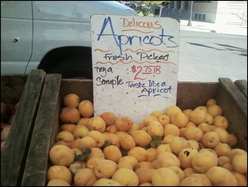 Wednesday Wildstone Whim: (An occasional mid-week blog post from us) As we work to try to get the word out about our John Primmer Surgery Support Fundraiser ($1,300 down and $8,700 to go, see link on our Facebook or website) we learned about these two programs that support food access and education in our area are in the running for a Seeds of Change grant of up to $20,000. You can vote daily until 4/18. Entries with the most votes move to the judging stage. Vote for them both! Friends of Hiland Hall Gardens' Seed to Plate Educational Program: https://www.seedsofchangegrant.com/GalleryDetail.aspx?id=2219 The Downtown Pittsfield Farmers Market to expand their market capacity & increase access to healthy food for residents: https://seedsofchangegrant.com/GalleryDetail.aspx?id=1600 We here at Wildstone Farm are very grateful to be a part of the community that we are. Though John and Joy live and farm in Vermont, their roots began in the Berkshires until they found land in Vermont. This tri-state region that we live in is very much one large community. It is humbling when someone complements us on our produce, or offers their help us in some way. Though we have been active in the local farming community for almost 30 years, and are a constant fixture at the Bennington Farmers' Market, we began farming before the days of websites and social media. People heard about us perhaps through a friend (still a great way to hear about anything) or from something in the local paper. Sometimes when I (Silvia), mentions that I work and occasionally help at a farm in Pownal, people haven't heard of Wildstone Farm, and have heard of Lisa's much newer farm in Pownal. As farmers both farms have the same goal of providing food to the community (families, individuals, seniors, schools, restaurants, grocers, etc), but the scale and method to meet that ends are different. Each farm is alike, yet unique. Our presence on the web started in 2008 or 9 when I told John and Joy they need to be searchable online if they ever wanted more CSA customers or people to know about them in this day in age. Being self-professed luddites, they agreed as long as I made it. They now have an semi-functioning laptop and a real email address, we are on our third website, and I think John even taught himself how to use Facebook. Farmers really are a master of all (there was a great article about this recently that I can't find anymore!). We feel so grateful that people feel the same way about farming in our community as we do. Though our way of getting folks to hear about our farm haven't used online media until recent years, we think it's important that our COMMUNITY in this region has this diverse mix of farmers that specialize in similar yet different things, get what they offer to the community available in different ways, and work to educate the community that supporting local agriculture is the key to future health of yourselves, the community, and farmers in your community. There is a great excerpt in Wendell Berry's "Long Legged House" (see link to book, or find it at your local bookstore or library) and the part I really like is a page or two after this one, but this stood out to me: "A community is the mental and spiritual condition of knowing that the place is shared, and that the people who share the place define and limit the possibilities of each other's lives. It is the knowledge that people have of each other, their concern for each other, their trust in each other, the freedom with which they come and go among themselves." As a community we share ideals and if we truly are connected to our community, we want to do what is best as a whole. It is hard to ask for money as we are with John's surgery support campaign. All other kinds of options, advice, and thoughts are executed first. It seems impersonal to ask for money online these days, but so many people have been able to get back on their feet by using crowdsourcing fundraisers. What did people do when they needed help back in the day? Well they were more connected to their neighbors. Maybe walked next door? Polly told Susie, who told Bill? That still happens, and though we are in a digitized world, it still doesn't take away from the community if we use technology to add value and create and sustain connections. We share this place- it's land comprised of forests, trails, bodies of water, and land to farm. We all are responsible for nurturing it, learning about it, helping it where it needs it, and in turn it provides us with nourishment. After having worked for John and Joy back in 2008, my land ethic started feeling fuller. I have a conservation and recreation management background, and have worked monitoring a few wilderness areas, so I have a fairly defined land ethic as it is. I started making more conscience decisions about where I bought my food, and the concern about how far it traveled started to bother me. When I went and moved to the Eastern Sierra, close to the land owhere lots of produce in America comes from I thought I'd have access to lots of reasonably priced produce (avacados, were super affordable). I drove through miles of almond groves on our way to San Francisco listening to mariachi music and later read about the horrible water quality in those areas due to the farms. I dated someone who's father farmed produce at large scale and made the mistake of commenting while making a salad, "did you know baby carrots are just carrot rejects that have been shaved down?" which he took as an insult. It was something I'd never really thought about until I worked on a farm. All I'd ever thought about is that baby carrots tend to get either too slimy or too dry and white if you don't eat them fast enough and that was gross. In Mammoth Lakes, friends of mine were involved (still are and one is from VT) in a regional CSA where they source and collect the produce from the few farms in the widespread, difficult to farm area surrounding by public land in a volcanic soil, high desert climate (But dang, imagine if the geothermal greenhouse ever happens). This town had one grocery store that was the most expensive Vons in California, and a health food store that had the best dehydrated bulk backpacking food I've EVER seen, but the produce wasn't always the best, and the Farmers' Market left me missing Vermont. The Farmers' Market in Minden, NV only had one organic grower and she grew strawberries, which conventionally are a pesticide mess. There was a fruit stand that actually had a sign that read, "Apricots Taste Like Apricots" and the vendors weren't that friendly. It was all about the quick sale. So here I am, back in Southern Vermont after three busy years working along the Appalachian National Scenic Trail that runs through our community being one with the Long Trail, trying to feel part of this community I grew up in again. I've always had my ski community in winter, or my seasonal work friend community. I love my Trail Community, but the Farm Community and the local agriculture community is one I missed and haven't felt entirely integrated into since I've been somewhat of an agricultural moonlighter. Sometimes when I put on a pair of my hiking boots or my worn down muck boots I feel like I'm playing an important part of both worlds- afterall, dirt unites us all. -Silvia C. Photos are of my communities and here is the link to Wendell Berry- Long Legged House 2/16/2016 0 Comments Magical Cabbage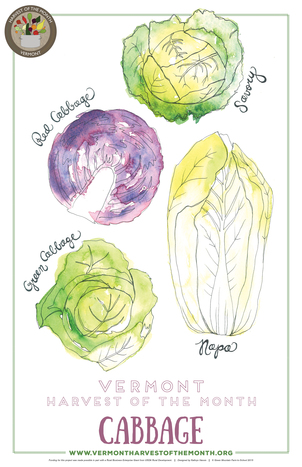 Cabbage is so magical. Have you ever admired a red cabbage's geometric patterns when you cut it in half? A little goes a long way. Many varieties store for a long time if kept cool. It is a member of the brassicaceae family, which is known to be more cold tolerant. It has vitamin C, B9 (folic acid), and vitamin K, as well as cancer fighting glucosinolates. It is the Vermont Harvest of the Month for February. Learn more about cabbage, get educator tips, and recipes you can make at home (raw, cooked, or fermented) from the Vermont Harvest of the Month HERE. This summer in Great Barrington, our farm friend, Silvia, took a fermenting class from Michelle Kaplan of Berkshire Ferments. She learned the basics of fermentation, which she had been experimenting with for years, and hopes to try new recipes and expand her fermentation realm. Michelle, who teaches these workshops, is a wild yeast and ferment loving young woman in the Southern Berkshires. She is one of the main organizers for the first annual Fermentation Festival held at revamped Great Barrington FairGrounds this past fall. Follow Berkshire Ferments on their website, or on Facebook. Michelle's favorite book is "Wild Fermentation" by Sandor Ellix Katz. He will actually be hosting a workshop at the Rowe Center in Rowe, MA in March. Of course you don't have to ferment cabbage, but why not? Another favorite recipe is for this Golden Kraut. Don't have time to make it? Find Hosta Hill Gochu Curry Kraut at a market in the Berkshires. They are another great farm and value added product business based in our area. Cabbage Photo Credit: the internet Here are a few fun resources from Vermont Harvest of the Month: Herbs.
If you haven't been to their website yet, it's a great resource for at-home and for educational purposes. We just love the artwork too. Here is the main page of their newsletter. Also a great "homepage" resource list. Here are some tips for Home Uses of Herbs (also on their homepage) with two recipes. Here at Wildstone Farm we grow a selection of herbs for our own use, and for market. 3/31/2015 0 Comments Good ReadsIn working on our third website ever before our busy season is upon is, it is a good reminder to take a break and read something. Our friend and occasional farm hand, was traveling recently, and found these short farm related essays, articles, and documentary to be interesting enough to share.
Recommended Readings: The Pleasure of Eating, essay by Wendell Berry Concrete Progress: Farming the Fifth Floor, Orion Blog Post by Peter Brewitt ( flew in and out of the Chicago Midway Airport and wished she had time to actually leave it to go here) As California Drought Enters 4th Year, Conservation Efforts and Worries Increase, NY Times Article And practical uses of Coffee Grounds! Who knew? Although April is just around the corner Vermont Harvest of the Month for March: Beets and Rutabega Watch: Food Chains: Documentary about the human cost of our food supply and the complicity of large buyers of produce. Also streams if you have Netflix. |
Archives
February 2017
Categories |
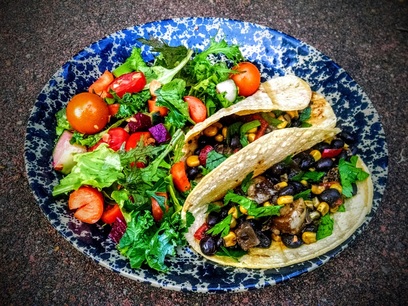
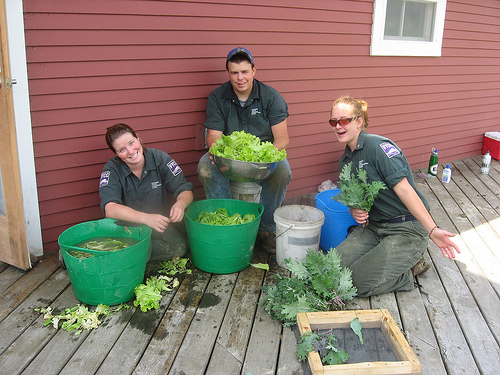
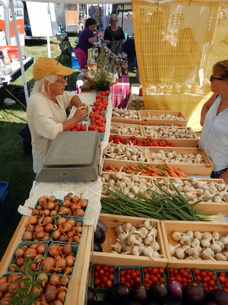

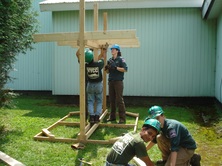
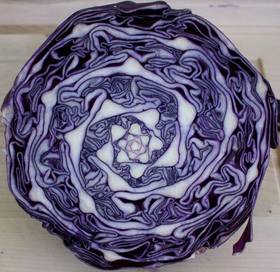
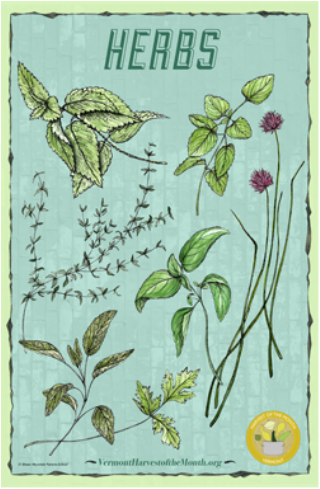
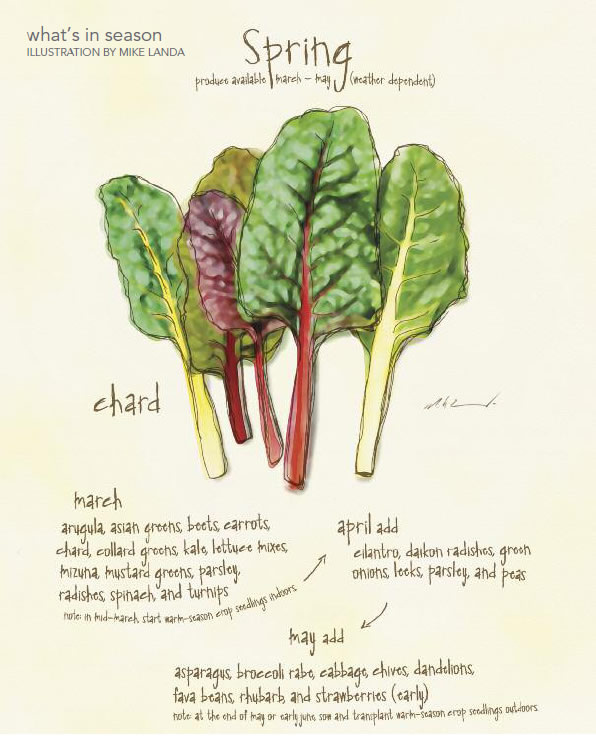
 RSS Feed
RSS Feed